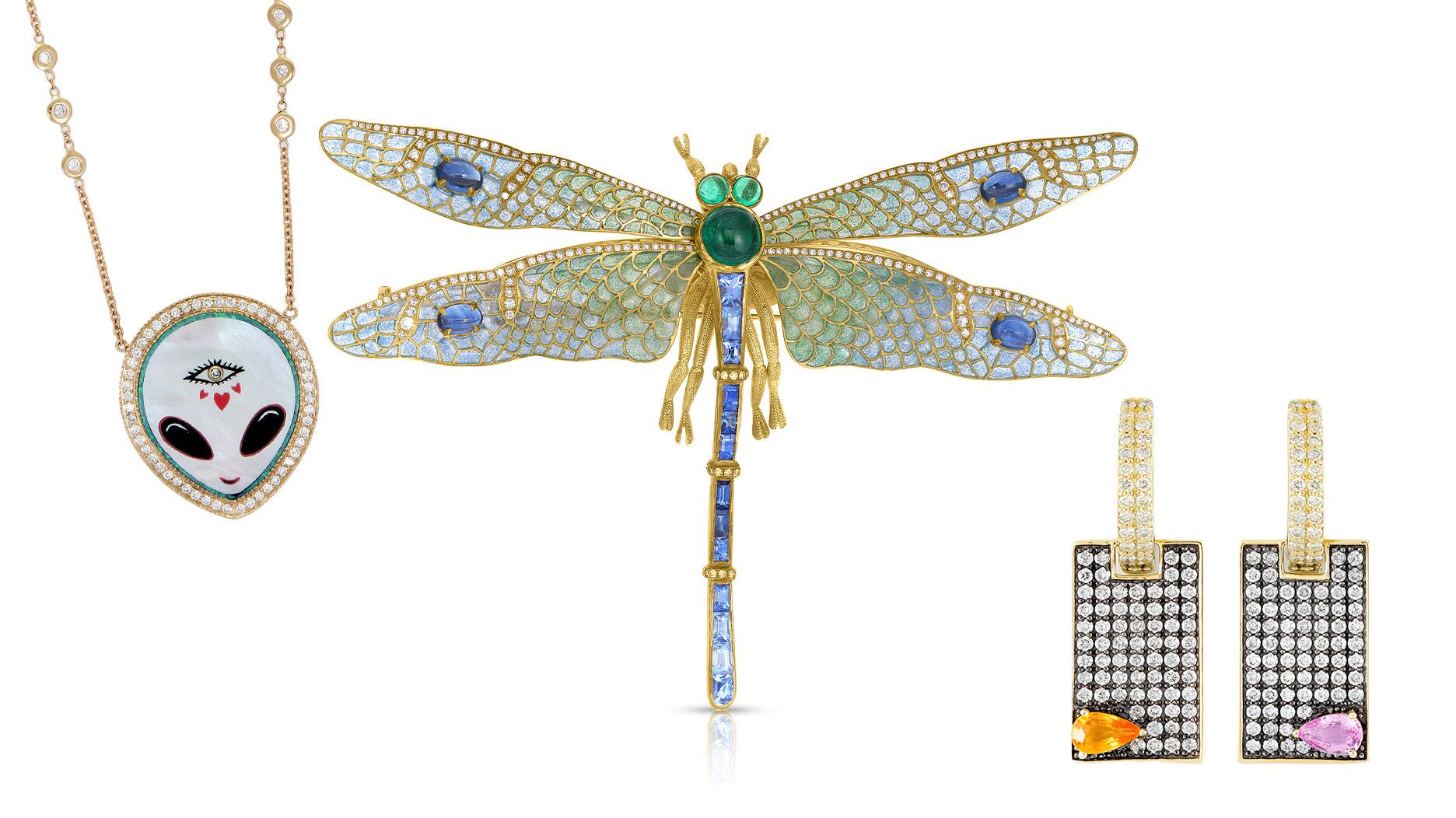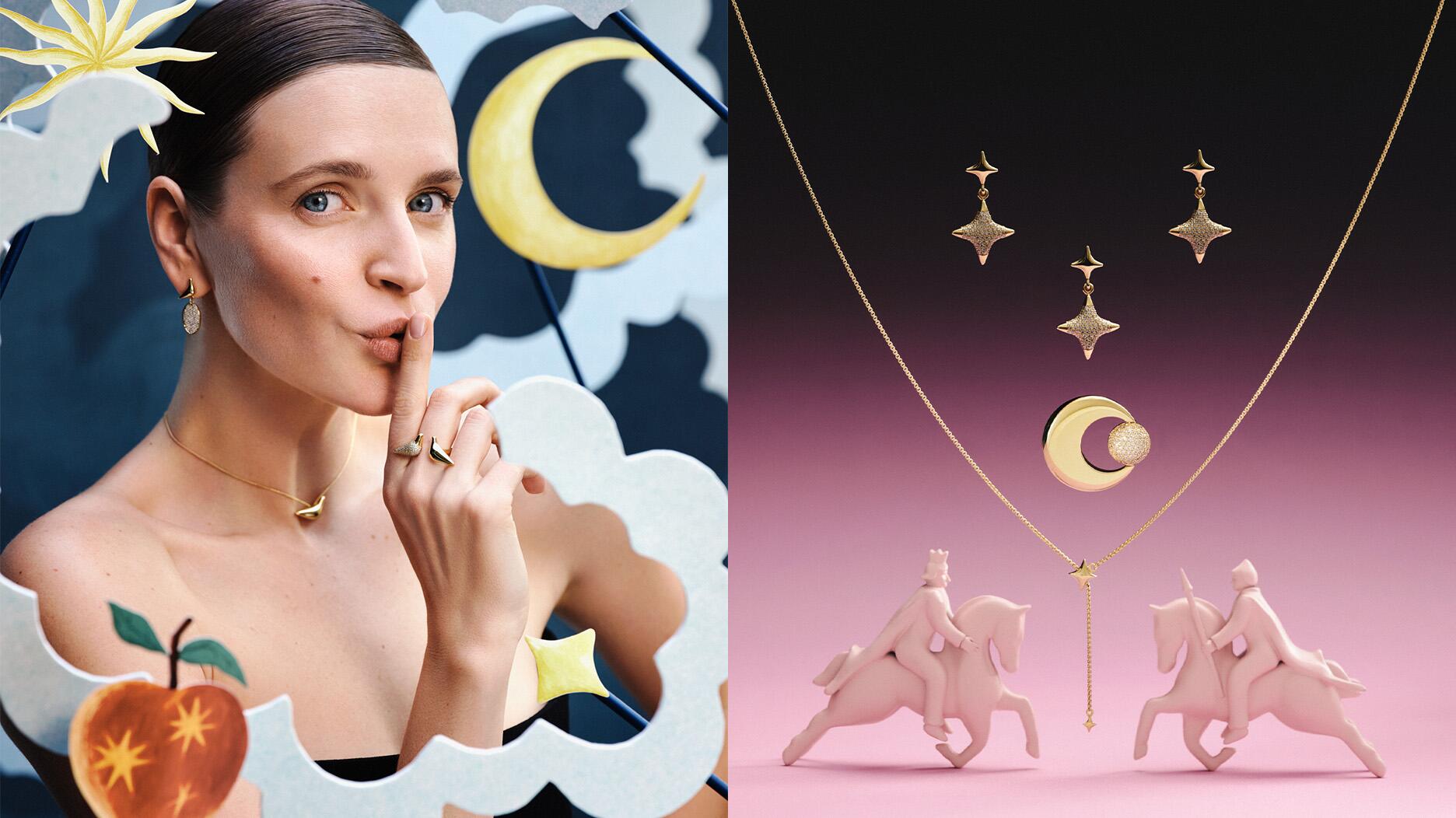The couple pleaded guilty to concealing at least $127 million in cash transactions at its precious metals businesses.
The History Behind … Georgian mourning jewelry
This month, National Jeweler delves into the when, where and why of mourning jewelry worn between roughly 1714 and 1830.

New York—Seeing her first piece of Georgian mourning jewelry with a hand-painted scene some 25 years ago almost made Lenore Dailey cry, and it changed the course of career.
“I was amazed by it,” says the Michigan-based antique jewelry dealer and collector, recalling the powerful imagery of the piece, created in memory of a child who died at the age of 2, that steered her into buying and selling the category.
A quarter of a century later, Dailey, who declines the title of “expert” when it comes to mourning jewelry and instead refers to herself as an “enthusiastic collector with much to learn,” shared her knowledge for National Jeweler’s The History Behind.
This month’s feature focuses on mourning jewelry from the Georgian period, the era when King George I through George IV ruled England, from 1714 to 1830.
What is mourning jewelry? To understand the type of mourning jewelry worn during the Georgian period, one must first take a step back and look at the pieces worn prior to the mid-1600s.
Dailey says in that time, memento mori jewelry largely was donned to remind the wearer that they, too, would die one day; that life is transient and fleeting. (Memento mori is a Latin phrase that means “Remember that you will die.”)
“There was so much death and dying” in those days, Dailey observes. “Mothers lost children … there were so many diseases. Death was something that was on their
minds.”
The shift in mourning jewelry began around 1649 with the execution of King Charles I of England.
Dailey says many royalists wanted to show their support sympathy for the fallen king. They commissioned their jewelers to make pieces of faced Stuart crystal (the king was of the House of Stuart) with a portrait of the king underneath.
This began a trend among the wealthy aristocracy to have mourning pieces commissioned to remember their own lost loved ones, marking a shift from memento mori--pieces that were a reflection of mortality and the transient nature of life on earth--to mourning jewelry, which focuses on remembrance, grief, comfort and consolation.
What materials were used for these pieces? Some of the materials used to make Georgian era mourning jewelry were gold, along with silver and base metals, and rock crystal. Very rarely, diamonds were used.
Some of the scenes included in mourning pieces were painted on copper, vellum (a parchment made from animal skin), and ivory, trade in which now is severely restricted in the United States.
Human hair also was utilized, to paint the scenes and as part of the design.
How much is Georgian-era mourning jewelry worth today? Prices for pieces from this period range from $300 or $400 for a small locket to the thousands for larger, more elaborate pieces commissioned by the wealthier individuals of the day.
How can a retailer add this category to their antique jewelry offerings? Dailey said quality pieces from the Georgian era are fairly scarce. “You are going to have to hunt for them, just like I do,” she says.
Dealers who work in this category include Dailey, Samuel Gassman of E. Foxe Harrell in New York and Darlene Boyard.
No matter from whom a retailer chooses to source their Georgian mourning jewelry, Dailey offers this piece of advice: work with a reputable dealer who stands behind whatever they sell.
The Latest

Consumers shared concerns about prices, inflation, tariffs, trade, and politics in the survey’s write-in response section.

In February 2026, the auction house will move its headquarters to the former Steinway Hall, a neoclassical landmark on Billionaires’ Row.

How Jewelers of America’s 20 Under 40 are leading to ensure a brighter future for the jewelry industry.

The new show will take place Jan. 23-25, 2026.


The former BHP Billiton leader and Gemfields chairman is remembered for his influential leadership throughout his 50-year mining career.

The LVMH-owned brand has partnered with the costume design union to revamp its award for 2026.

Roseco’s 704-page catalog showcases new lab-grown diamonds, findings, tools & more—available in print or interactive digital editions.

The luxury titan inked a deal to acquire an initial minority stake in the jewelry manufacturer with a pathway to full ownership by 2032.

The company’s curation of unsigned vintage and estate jewelry debuted at the Bloomingdale’s in Costa Mesa, California.

In the recent multi-shipment seizure, CBP also found counterfeit Audemars Piguet, Moncler, and Chrome Hearts items.

Helzberg’s Chief Retail Officer Mitch Maggart shared details about its tests of a new store concept rooted in an elevated luxury experience.

Jewelers of America execs and National Jeweler editors discuss tariffs, the sky-high gold price, and the engagement that broke the internet.

The luxury goods company said founder Ippolita Rostagno will remain at the brand’s helm.

Laura Burdese, who joined the Italian luxury brand in 2022, will take on the role in July.

The National Jeweler editors revisit the most noteworthy industry happenings and design trends from 2025.

Need a gift for the cat lover who has everything? Look no further than our latest Piece of the Week.

It purchased the “Grosse Pièce,” an ultra-complicated Audemars Piguet pocket watch from the ‘20s, for a record-breaking price at Sotheby’s.

The lab-grown diamond grower now offers custom engagement and fashion jewelry through its Kira Custom Lab Jewelry service.

Chandler got his start at Michelson Jewelers and has served as DCA president and CEO since 2001. He will retire at the end of the month.

The boutique is slated to open this week inside Terminal 8, offering pre-owned Rolex watches and more to international travelers.

Sponsored by Digital Monitoring Products

The special-edition egg pendant ingested in a New Zealand jewelry store was recovered after a six-day wait.

Associate Editor Natalie Francisco plays favorites with Piece of the Week, selecting a standout piece of jewelry from each month of 2025.

The “Love and Desire” campaign is inspired by the magic that follows when one’s heart leads the way, said the brand.

Two awardees will receive free tuition for an educational course at the Swiss lab, with flights and lodging included.

Berta de Pablos-Barbier will replace Alexander Lacik at the start of January, two months earlier than expected.


























